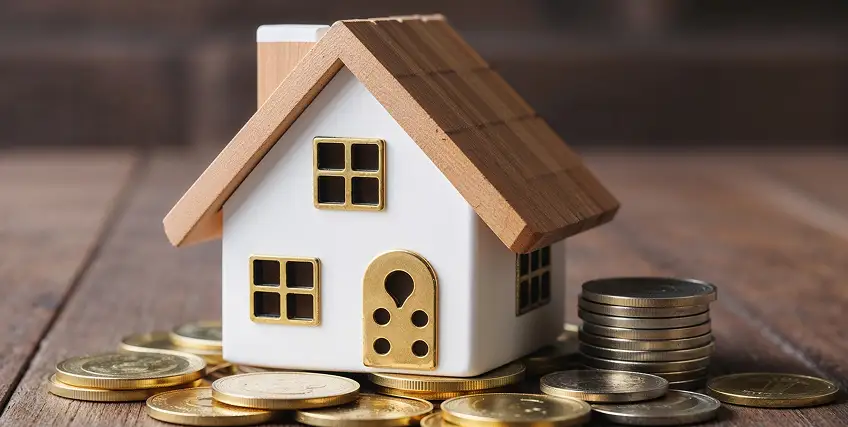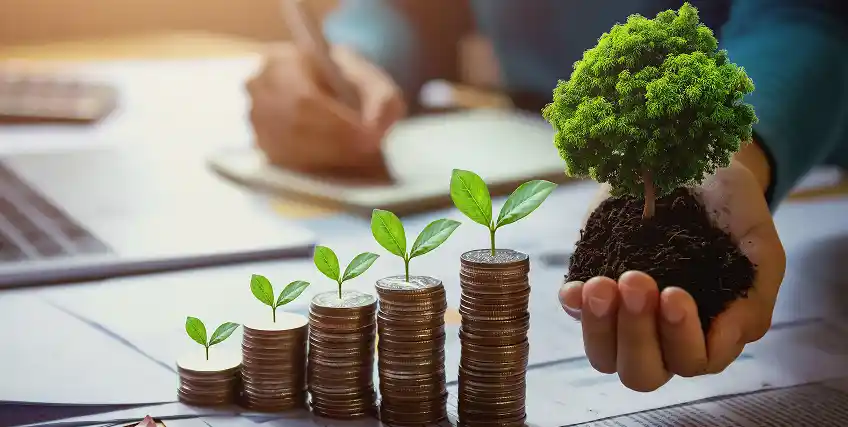How Climate Change is Evolving Small Business Loans
February 25, 2025 | Last Updated on: February 25, 2025

In this article:
- What is climate change?
- How does climate change affect small business owners?
- Federal climate change programs and small businesses
- Climate change financing and initiatives
A few decades ago, the idea that climate change could affect small businesses would have been called absurd or ridiculous, and the person who suggested it would have been made a laughingstock. But in the wake of increasingly severe and consistent natural disasters, as well as increasing amounts of scientific evidence, it has now become clear that climate change is not something that we should think about for the future, but also for the present.
What is climate change?
Climate change describes the long-term changes in the Earth’s temperatures and weather conditions. According to NASA, the Earth’s climate is constantly changing and the average temperature has increased by about one degree Fahrenheit in the last 100 years. That tiny temperature change is enough to set into motion a series of events like rising oceans, longer wildfire seasons, melting ice, and changing the growth patterns of plants. The slightly increased temperatures create excess evaporation, and the increased moisture affects people’s health, drinking water, and agriculture, particularly in the developing world where populations are already vulnerable to cultural and environmental shocks.
Climate change has several influencing factors. Some natural causes of climate change include a shift in the distance between the sun and the Earth and the prevalence of volcanos. People are also contributing to climate-related changes by burning fossil fuels, like oil, coal, and gas, for energy, and through improper waste management, all of which result in increased greenhouse gasses being emitted into the atmosphere.
As we approach 2023, it is impossible not to be aware of climate change.
Why does climate change matter?
Risks associated with climate change will affect everyone living on Earth, including small business owners and startup entrepreneurs. The risks can be separated into three main categories.
- Physical risks – The changing climate pose a threat to the physical environment. Increased frequencies of global natural disasters, like hurricanes, droughts, wildfires, and floods can be expected. During recovery periods following a natural disaster, the economy slows putting a strain on homeowners, entrepreneurs, and the labor market.
- Mitigation risks – As concerns over the climate grow, regulatory requirements set by government policymakers change forcing businesses to adapt. For companies that don’t keep up with the evolving litigation, their liability to the public for noncompliance, injury, and nondisclosure will increase.
- Transitional risks – Transitional risks relate to the costs associated with complying with new laws that address climate change. Although temporary, these risks affect businesses and investors more than homeowners and individuals. Certain industries, like energy, are impacted more than others as climate policy requires green energy sources and public disclosures.
How does climate change affect small business owners?
As previously stated, climate change affects everyone. While individuals and businesses share many of the same effects, small and large businesses are being directly impacted by climate change in 2022. Since small business owners have fewer resources and more vulnerabilities than large corporations, many entrepreneurs wonder how climate change might change their day-to-day operations.
Input costs
Changes in the weather cause supply chain disruptions which make it difficult for small business owners to purchase the raw materials and supplies required to run their businesses. Not only do business owners need to allow for delivery delays, but the costs of supplies are also increasing which cuts into the company’s profit margins. In addition to supply chain and shipping issues, weather can decrease the availability of certain products. For example, heavy rainfall and droughts affect farmers and the availability of food.
Financing decisions
The supply chain disruptions contributed to a rise in the cost of goods, which, along with labor shortages during the pandemic, caused the gross domestic product (GDP) to rise. The growing GDP results in increased inflationary rates. As the Federal Reserve tries to fight inflation, they raise interest rates. The higher rates make it more expensive for small business owners to borrow new money and may cause an increase in their current monthly payments. In addition to higher financing costs, borrowers in agricultural industries are seeing lower maximum loan amounts from lenders. This is because the increased risks of droughts and other types of severe weather increase lending risks.
You may also like:
short-term business loans
Customer loyalty
Small businesses rely on their customers to make a living. As news about the impacts of climate change becomes more common, the public pressure on businesses to reduce their carbon footprint increases. Shoppers are choosing products and services based on information about the organization’s sustainability processes. As many large national brands, like IKEA and Walmart, convert to renewable energy, small business owners struggle with the financial burden of making the changes necessary to keep up growing competitiveness.
Disaster recovery
Climate change increases the risks of severe weather. Small businesses that experience damage from a flood, blizzard, or hurricane can suffer great financial loss, and some are not able to rebuild after a natural disaster. While business insurance policies and government funding assistance help those recovery efforts, those funds often come too late or too little. Small business owners are forced to rely on the issuance of disaster loans to repair damaged properties and open for business again.
Federal climate change programs and small businesses
Climate change is a big problem that affects people all over the world. So how do small businesses fit in? Small businesses account for 99.9 percent of businesses in the United States and employ 47.5 percent of the country’s workforce. The growth rates, labor wages paid, and the number of exports produced by small business owners makes them a large factor in calculating GDP and measuring the health of the economy.
In addition to making a large impact on the economy, small businesses also affect the climate. An OECD publication estimated that small businesses are responsible for 60 to 70 percent of industrial pollution. President Joe Biden’s plan to achieve 100 percent clean energy and net-zero emissions by 2050 has motivated government programs and private sector financial institutions to focus on offering financing options and incentives to small business efforts to reach carbon neutrality.
OECD programs
The Organization for Economic Cooperation and Development (OECD), according to their website, is an international organization that helps governments create policies that “foster prosperity, equality, opportunity and well-being for all.” They work with citizens and government agencies to improve economic activity and address environmental challenges, like climate change. The actions of the OECD help financial institutions evolve lending policies and update risk assessment strategies to accommodate new information on climate change. The involvement of the OECD and climate financing issuance increases consumer confidence in financial markets, which also helps the economy grow. The OECD addresses environmental challenges all over the world and helps governments to create policies to regulate carbon emissions and promote energy efficiency.
DOE programs
Earlier in 2022, the Department of Energy (DOE) announced from Washington D.C., $53 million in funding that was being allocated to helping small businesses address climate change. The funding is intended to aid several projects relating to renewable energy, energy storage, carbon capture and conversion, and equitable research efforts, across 38 states. Funding for the projects is administered by the DOE’s Small Business Innovation Research (SBIR) and Small Business Technology Transfer (STTR) programs.
Multilateral development banks’ climate goal
In 2021, eight international financial institutions, which make up some of the world’s largest development banks, contributed $82 billion to meet their 2019 goal of funding climate change commitments. The $82 billion in funds exceeded the previous year’s contributions by more than 24%. The development banks, including the World Bank and European Investment Bank (EIB), provided the following financial support to countries:
- $51 billion was granted to low to medium-income countries, $33 billion of which went to projects to decrease carbon emissions
- $17 billion was used to fund programs to help economies deal with the impact of climate change
- $13 billion was contributed by private investors
The funding provided in 2021 showed that the development banks met their goal as stated in the 2019 Joint Report on Multilateral Development Bank’s Climate Finance of providing a minimum of $50 billion each year through 2025.
Climate Change Action Plan
The World Bank Group promotes climate action through its Climate Change Action Plan 2021 - 2015, which addresses the organization’s Green, Resilient, and Inclusive Development (GRID) methodology. The action plan is designed for developed countries and private sector clients to minimize climate risk and improve climate finance. The inclusive plan expresses the importance of natural capital, ecosystem services, and support for green solutions and focuses on promoting “green economies, not just green projects.”
Climate change financing and initiatives
As concerns about climate change reach policymakers, governments must consider the cost of making these changes, which is where climate change financing comes in. In the financial sector, terms like, “climate finance” and “green finance” are impacting the way governments allocate funding. Green finance is an umbrella term used to describe the increased financial support required to complete projects intended to fight climate change. Climate finance is a subset of green finance that specifically addresses public finance and the efforts of the United Nations Framework Convention on Climate Change (UNFCCC)
Climate finance works with all countries to reduce greenhouse gas emissions through funding programs for renewable power sources. It helps farmers and small business owners adapt to climate change with programs that provide climate-resilient seeds and affordable access to solar energy. Both public finance and private finance play an important role in global climate finance. Public financing from governments is used for programs that contribute to a healthier environment when private financing is not available. By doing so, private finance is encouraged to participate in the new green economy. Contributions from private finance also come from investors that choose to purchase equity in green companies that produce renewable energy or create building supplies from recycled goods.
Paris Agreement
The demand for climate financing encouraged legislators to sign the Paris Agreement on December 12, 2015. The Paris Agreement set policies to make “finance flows consistent with a pathway towards low greenhouse gas emissions and climate-resilient development.” The agreement addresses reducing emissions, and making infrastructures more resilient to natural disasters, as well as predicting that low-carbon economies would create more than 65 million new jobs before 2030. As part of the agreement, developed countries agreed to generate $100 billion each year through 2020 to address mitigation and adaptation in underdeveloped countries.
Conclusion
The long-term shift in the Earth’s temperatures and the weather is a concern for small business owners and individuals all over the world because of the physical, mitigation, and transitional risks it presents. To decrease its effects on our future and promote sustainable development, several government-backed funding and incentive programs have been launched, including multiple OECD programs. The overall focus of the increased funding is to decrease the carbon footprint of small businesses on the environment and improve environmentally friendly practices, like relying on renewable energy sources and monitoring waste management.
Small businesses must try to adapt to changing policies and customer demand by increasing their own sustainability, but the availability of financial resources continues to be a concern. If you’re a small business owner that is interested in learning more about a financing option to mitigate the impact of climate change, reach out to a finance specialist at Biz2Credit today. There are several loan options available, like the line of credit that this manufacturing company secured to make capital improvements.
FAQs
How does climate change affect small businesses?
Flooding and extreme weather events pose a major business risk, causing asset damage and operational disruptions. The impact will largely depend on the resilience of local infrastructure, including energy, transportation, and telecommunications.
How is finance related to climate change?
Climate finance helps countries to reduce greenhouse gas emissions by financing renewable power like wind or solar. It also lets the communities to adapt to climate change impacts.
How climate change create more business opportunities?
Businesses transitioning to a lower-carbon economy can reduce costs by minimizing energy, material, and water consumption. Additionally, eco-friendly products and services can attract environmentally conscious buyers, driving competitive advantage and sales growth.
How is climate change bad for business?
Weather-related shipping delays, supplier disruptions causing parts shortages, drought-induced water scarcity, and storm-related power outages can all hinder production and impact product quality.
What industries are the worst for climate change?
Fossil fuels—coal, oil, and gas—are the leading drivers of global climate change, responsible for over 75% of greenhouse gas emissions and nearly 90% of all carbon dioxide emissions.




